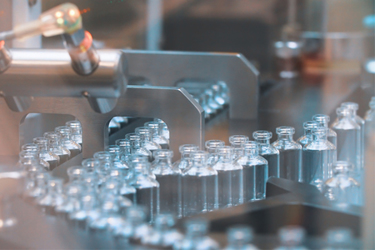Glass Vial Forming Lines

Stevanato Group vial forming lines come in a variety of specifications that vary depending on the production requirements. By maintaining close ties with the customer throughout every step of the process, we can design and manufacture fully tailored, purpose-built equipment capable of producing vials with entirely custom dimensions and shape.

High quality, high reliability
- Optimal mechanical durability, thanks to carefully selected raw materials and an extremely accurate assembly process
- Continuous monitoring of all critical parameters that influence the forming process
- High mechanical precision and easy-to-use HMIs, ensuring seamless highspeed production, fewer rejects and mechanical resistance
- Satisfying the needs of the most demanding pharma company requirements on resistance, cosmetics and dimensions
A complete production line or stand-alone modules

Stevanato Group glass converting lines come as a turnkey package, including the forming unit and other process equipment, or as stand-alone modules. Completely automatic washing equipment to remove particles from the glass and reduce cosmetic defects is also available.

Siliconization
Siliconization is a critical operation that influences container performance: distribution must be optimized and monitored to ensure a safe and effective administration to the patient and to guarantee drug quality.
Silicone, in the form of emulsions and/or oil, is primarily used as a lubricant. When applied to vials, its hydrophobic properties ensure a high restitution rate down to the last drop of product.
Moreover, the silicone layer ;minimizes the interactions between the product and the glass container, and prevents certain products from sticking to the internal surface, making the glass appear perfectly transparent.
Optimizing control of the process through precise automation, our siliconization lines are designed to:
- Increase gliding performance between the glass and internal components (e.g. rubber parts)
- Improve the flow of liquid solutions inside the container, reducing “dead volume” concerns
- Reduce the interactions between the pharmaceutical product and glass container
- Process the most common sprayed materials: silicon emulsion or silicon oil
Features
- Pre-heated with an electrical heating system
- Independent delivery system for each spray nozzle
- Volumetric pumps for silicone dose accuracy
- Silicone spray nozzle and air flows to uniformly spread the silicone along the internal surface of the glass product
- Baking lehr with electrical or gas heating system. The baking lehr can be installed on the siliconization line or be an independent unit, depending on the type of silicone used
